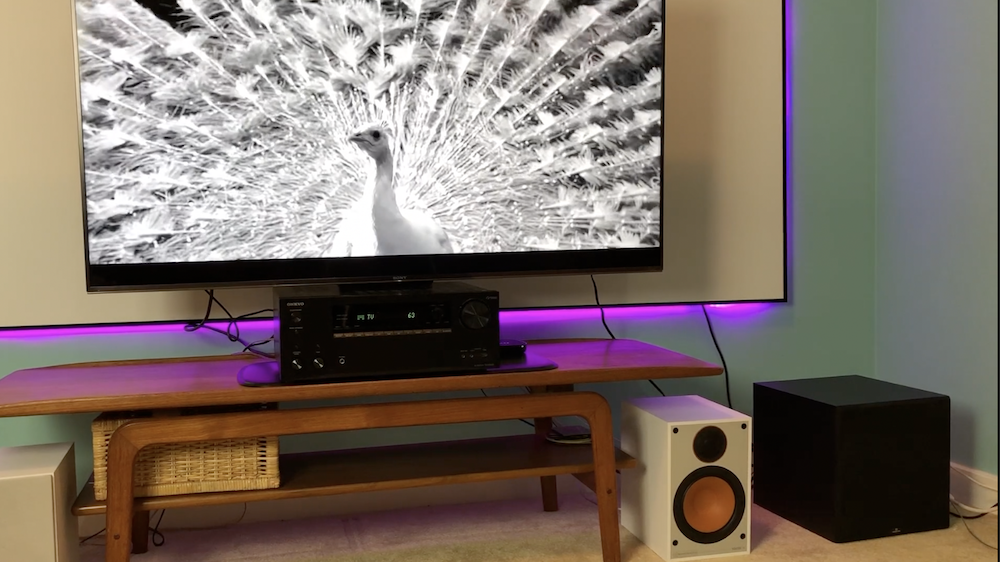 In a world where it may seem like wireless speakers dominate, there’s still plenty of folks who love a good hardwired home theatre system.
In a world where it may seem like wireless speakers dominate, there’s still plenty of folks who love a good hardwired home theatre system.
Monitor Audio is a British company specializing in speakers and I recently got my hands on some to test out and review in my home. They are:
Monitor MRW-10 powered subwoofer
Monitor 50 small bookshelf speakers
And the slightly larger Monitor 100 speakers.
We’ll take a look at each of them here, what they can do and how they all work together.
These speakers are really cool looking. You might not know it with the covers on, but pull them off and take in the tangerine view. These look really fun.
Set up Monitor speakers
To get things set up, you likely know what to do; connect them to your amp or receiver; in my case, the ONKYO TX-NR686 7.2-Channel Network A/V Receiver (that will be reviewed separately here on the blog soon). Take care to make good connections from speaker to amp.
The subwoofer needs AC power and an RCA cable. You can also use a dedicated subwoofer cable, but since those are twice the price of an RCA, I decided to save the bucks for some new music.
Let’s dig in on each of these:
Monitor MRW-10 Subwoofer features & specs
The MRW 10 powered subwoofer gives you bass down to below 30 Hz and offers a more immersive movie, music, or gaming experience thanks to those thunderous vibrations.
The Monitor MRW-10 has an MDF-built cabinet and it houses a 10”, long-throw MMP II bass driver and a rear port that allows optimal output from the powerful on-board 100 watt class D power amplifier.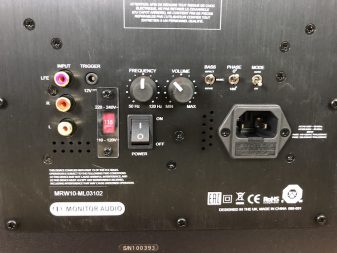
You’ve got some settings you can use with it too: there are three pre-set bass modes labelled Music, Movie, and Impact.
If you’ve got a more complex set up than I do in the test kitchen, there’s also the option to use the 12 V trigger which will give you switching control over your AV amp, processor, or home automation control system.
Monitor 50 speaker features & specs
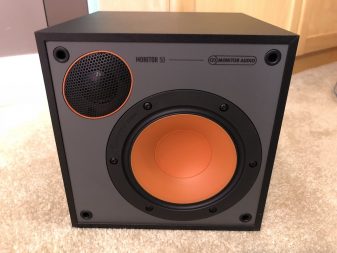 The compact Monitor 50 speakers are dubbed bookshelf speakers, and indeed they’re small enough for that application if that’s what you want.
The compact Monitor 50 speakers are dubbed bookshelf speakers, and indeed they’re small enough for that application if that’s what you want.
Monitor says “they deliver a surprisingly powerful performance for such small speakers” and I’d say I can agree with that. While this will likely not wow those of you with giant tower speakers at home and soundproofed walls, this should be lots of power for the average consumer.
The speakers are perfectly square and the cabinets hold the 51/2″ MMP II drivers and 25 mm black C-CAM tweeters. Somewhat unusually, they tweeters are placed in the top corner of the speakers and in doing that, Monitor was able to scale down the size. Does it look crooked? Maybe, but I think it looks great and if it bugs you, put the cover back on.
With a single set of gold plated binding posts to connect your amp to plus 70 watts of power behind them, they should be all you need in a compact bookshelf speaker.
Monitor 100 features & specs
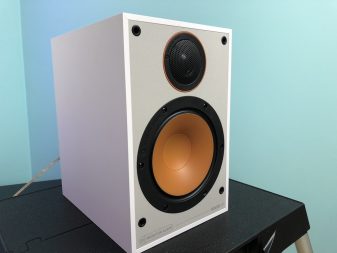 Moving up the line to the Monitor 100’s, you’re going to get a few additional features. These are a bit larger than the 50’s, and have 100 watts of power plus a 61/2″ MMP II bass driver and a 25 mm black C-CAM tweeter. With a larger bass driver and bigger cabinet, expect the 100s deliver a more expansive sound.
Moving up the line to the Monitor 100’s, you’re going to get a few additional features. These are a bit larger than the 50’s, and have 100 watts of power plus a 61/2″ MMP II bass driver and a 25 mm black C-CAM tweeter. With a larger bass driver and bigger cabinet, expect the 100s deliver a more expansive sound.
I did notice an obvious difference in power, so depending on your space and power requirements, you’ll have a choice to make.
In the rear, two sets of binding post terminals on each speaker allow for bi-wiring or a bi-amp set up.
Who is this set up for?
This set up, and these sizes of speakers are ideal for small to medium sized spaces, communal living where you can’t rock the walls and vibrate the floor like you could with a full size, full power set up. These would be ideal for smaller home theatres too. They’re also definitely for folks with an eye to design.
Listening experience & sound quality: Monitor Audio
 Whether you’re watching TV or listening to music, these speakers sound great. Like I say they’re not going to blow the doors off your media room, but then again, that’s not what they’re made for. These sound good, with clear dialogue, resonant bass, highs with no hiss or distortion or tinniness, and an overall rich, resonant sound.
Whether you’re watching TV or listening to music, these speakers sound great. Like I say they’re not going to blow the doors off your media room, but then again, that’s not what they’re made for. These sound good, with clear dialogue, resonant bass, highs with no hiss or distortion or tinniness, and an overall rich, resonant sound.
Overall thoughts about Monitor Audio Speakers
This was my first time testing out anything by Monitor. I have to say if judging a book by its cover was enough, I’d be sold on these. I love the orange driver cones and think it looks really fun and funky.
They were easy enough to set up, and the Subwoofer and Monitor 100’s multiple connection options can let these grow with your home theatre and provide more options to extend their life in the future.
Overall I was really happy with my Monitor Audio speaker and subwoofer experience and can recommend them if you’re looking to get started with a dedicated home theatre set up.
Get the Monitor MRW-10 powered subwoofer, Monitor 50 small bookshelf speakers
And the slightly larger Monitor 100 speakers at Best Buy.

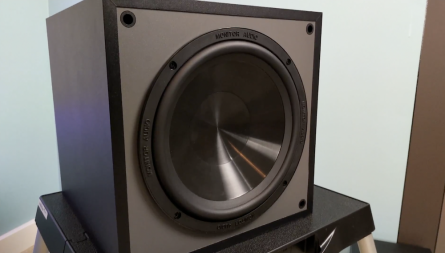
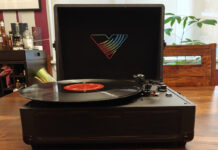
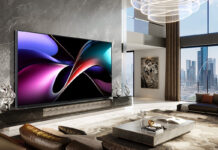

The one attribute, that I always found to be common on most all British made loudspeakers, is the very smooth and articulate mid-range frequencies they all have. Allowing you to have a normal conversation even during moderately loud passages in music, without straining your ears, as one of many benefits.
The Monitor Audio M50 have their tweeters “offset”, in order to allow for wider dispersion characteristics, and improve the width of the sound stage from the surround effect speakers .
I am also sure that, the entire setup would have significant improvement to it’s overall sound quality, if the main Monitor 100’s, and surround speakers, were used with speaker stands, or a bookshelf, to raise them off the floor.
As for reference to the Monitor Audio acronyms definitions; MMP = Metal Matrix Polymer , and C-Cam = Ceramic- Coated Aluminium Magnesium .
Comments are closed.